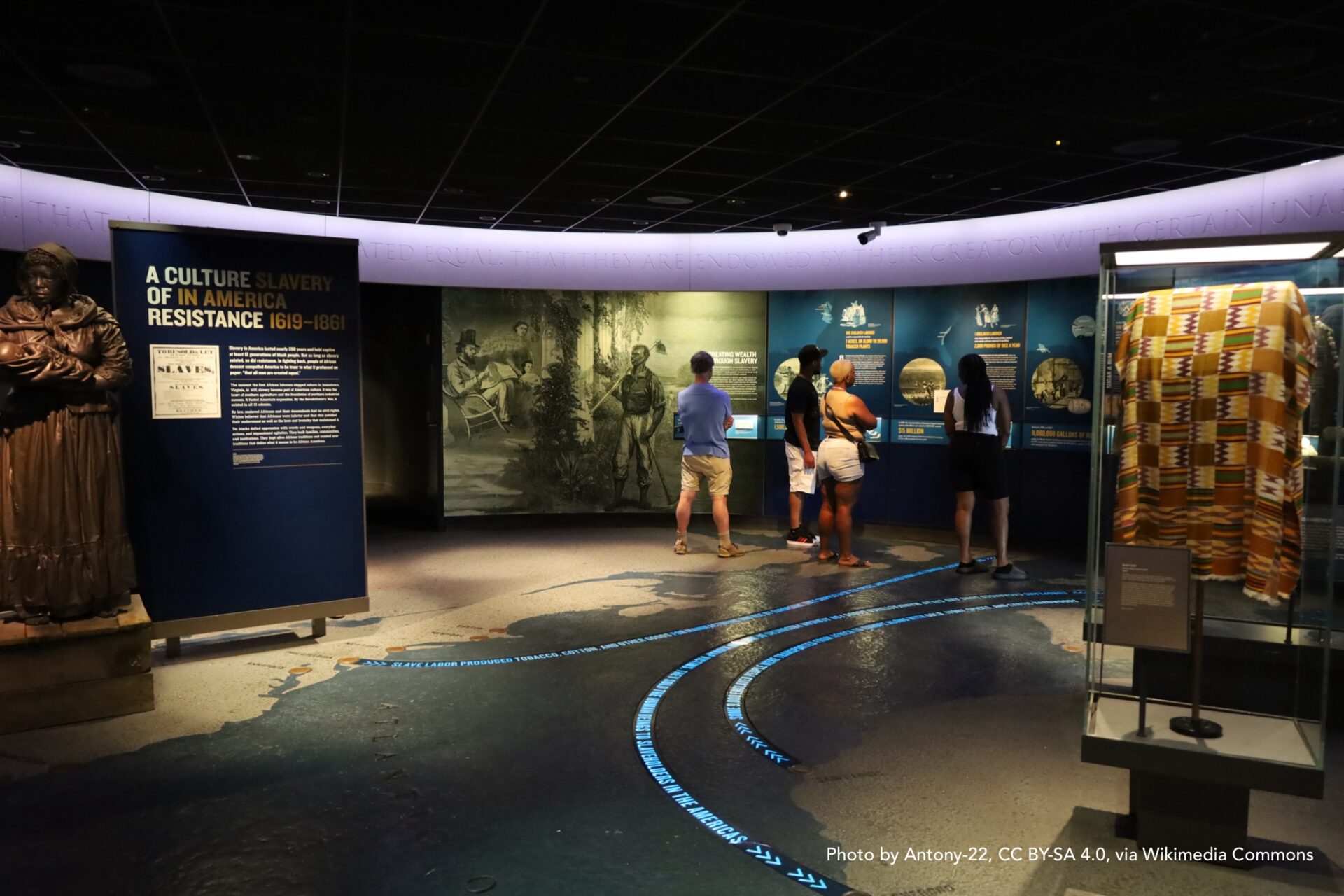
February 12, 2024
10 Historical Hot Spots To Pull Up To For Black History
BLACK ENTERPRISE is going hard with all things Blackety-Black per usual.
We know what you’re thinking. It’s February, the shortest month of the year and everyone and their mama is going to hit you over the head with a bunch of Black History Month data, facts, and highlights and statistics. Well, guess what? You’re right. BLACK ENTERPRISE is going hard with all things Blackety-Black per usual. We do this: 24, seven, 365 days of the year. BE is committed to producing content for us and by us, so it’s only right we go harder during the Blackest month of the calendar year. To kick things off, we’re suggesting folks get up, get out, and get better acquainted with these 10 historical places.
1) Congo Square
Considered the birthplace of Jazz, Congo Square was a gathering spot for the enslaved and free people of color to congregate and socialize, typically, on Sundays. Markets, drumming, dancing and celebrations took place in this historical landmark in New Orleans.
2) Harriet Tubman Home
Not many know the history of Harriet Tubman’s time in New York State. After finding freedom from enslavement for herself and others, The activist settled in Auburn, New York, where she remained till her death in 1913. At one point, the Tubman home was used for “the Aged and Infirm Negros.” Her home is now a national historical park site.
3) Montgomery Riverfront
The Montgomery riverfront has a storied past. The area once served as an auction block for enslaved people. Just a few blocks from the riverfront is where Rosa Parks initiated the Montgomery bus boycott in 1955. In August 2023, the riverfront was part of a cultural moment when a group of Blacks came to the defense of a Black man who was jumped by a group of drunken, rowdy, Caucasians.
4) Lillie Carroll Jackson Civil Rights Museum
The Lillie Carroll Jackson house is located in West Baltimore where the civil rights activist once lived and served her community. Jackson was integral to the Baltimore chapter of the NAACP as chairperson and president for almost 40 years. Jackson comes from a long line of Black excellence and civic engagement. The house, which was restored and developed into a museum is a living representation of the family’s service.
5) Schomburg Center for Research in Black Culture
The Schomburg Center is the epicenter of Black cultural information in Harlem. The research library is a New York Public Library and upholds its namesake vision in exhibiting, preserving, and making accessible “materials focused on African American, African Diaspora, and African experiences.”
6) Hammond House Museum
This historical Black museum, located in Atlanta in a predominantly Black neighborhood known as the West End, is a few blocks from the Atlanta University Center. The home originally belonged to Dr. Otis Hammond who was an avid art collector and now, is owned and operated by the city of Atlanta and boasts over 450 pieces of Black art in its collection.
7) Lorraine Hotel
The Lorraine Hotel in Memphis is where Dr. Martin Luther King was assassinated. The historical site is eerie in that it has been preserved in its original state since Dr. King’s senseless murder, transporting visitors back to April 4, 1968. The hotel is connected to the National Civil Rights Museum.
8) John Coltrane Church
Located in the San Francisco Bay area is a house of worship that honors the late great Jazz musician John Coltrane. Parishioners engage in a Sunday mass that welcomes participation in song and dance. Churchgoers can bring instruments to play during church service. The first Sunday of the month, the church hosts A Love Supreme Meditation where folks can “calm the mind and tune into the spirit.”
9) Oyotunji African Village
This African Village in Sheldon, South Carolina, was developed in 1970, and is modeled after West African kingdoms and society. The Black nationalist settlement stands on African principles, teaches diaspora history, African traditional religion, spirituality, and culture.
10) Door Of No Return
As history has it, Africans were stolen from their villages and sold into chattel slavery. On the Cape Coast of Africa, located in Ghana, is Elmina Castle’s door of no return which signifies this horrible transaction and marks the exit from the mother continent, the journey of the middle passage and the entry to the Transatlantic slave trade. It would be the last time enslaved Africans would touch native soil.
RELATED CONTENT: BLACK ENTERPRISE Covers Served Black History